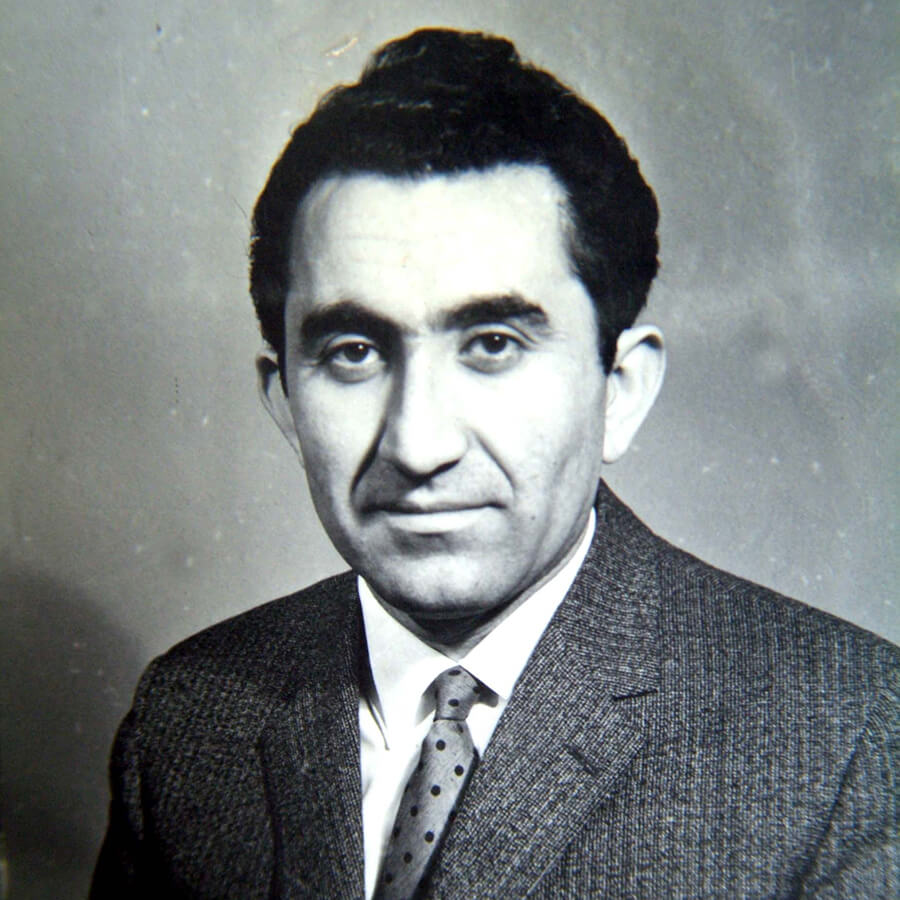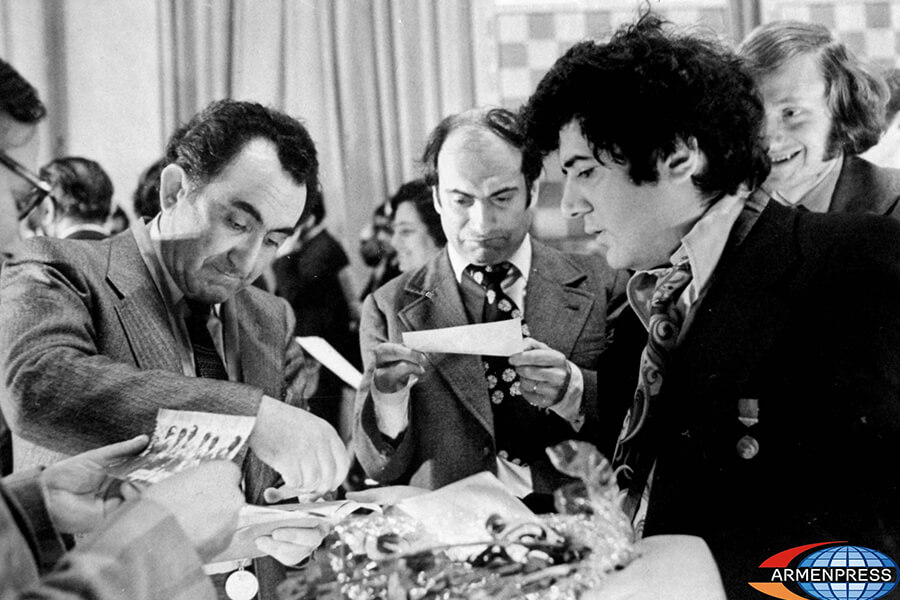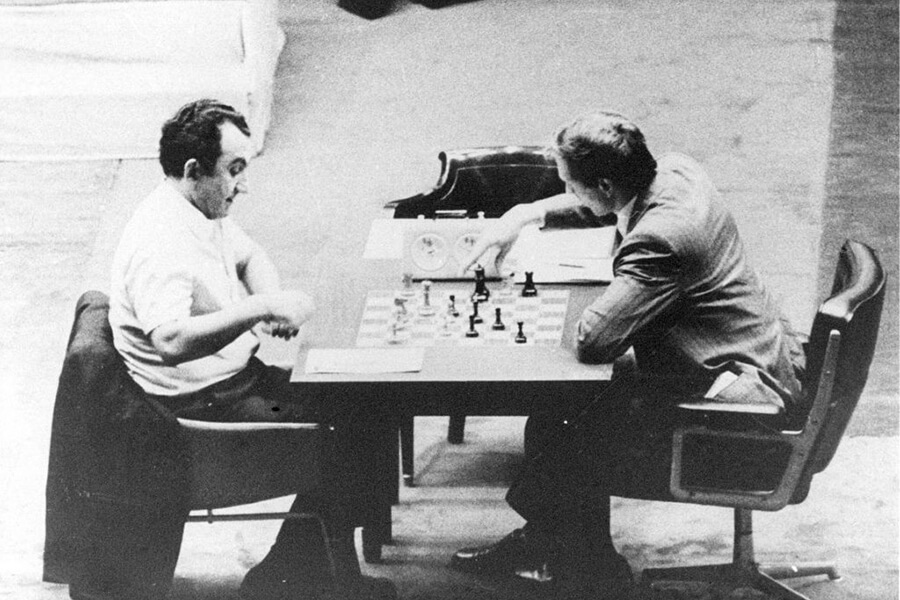No products in the cart.
Chess Players
Tigran Petrosian | Top 10 Chess Grandmasters
Table of Contents
Biography of Tigran Petrosian
Tigran Vartanovich Petrosian (17 June 1929 – 13 August 1984) was a Soviet-Armenian chess grandmaster and World Chess Champion from 1963 to 1969. Known for his defensive and strategic playing style, Petrosian was renowned for his exceptional positional understanding and ability to neutralize his opponents’ attacks.
Tigran Vartanovich Petrosian was born in Tbilisi, Georgia (then part of the Soviet Union), to an Armenian family. He showed an early aptitude for chess and began playing competitively during his teenage years.
Petrosian used his rations to buy Chess Praxis by Danish grandmaster Aron Nimzowitsch, the book which Petrosian later stated had the greatest influence on him as a chess player. He also bought Rudolf Spielmann’s The Art of Sacrifice in Chess. José Ral Capablanca was the second player who had an early impact on Petrosian’s chess career. He started his training at the Tiflis Palace of Pioneers at the age of 12 under the guidance of Archil Ebralidze. Ebralidze was a supporter of Nimzowitsch and Capablanca, and his scientific approach to chess discouraged wild tactics and dubious combinations. Petrosian consequently built up a repertoire of reliable positional openings, including the Caro-Kann Defense.
Tigran Petrosian’s Career
Petrosian quickly made a name for himself in Soviet chess circles and became an International Master in 1951.
Petrosian’s breakthrough came in the 1952 Soviet Championship when he finished second, ahead of many established grandmasters. His success continued, and he won the Soviet Championship in 1959, solidifying his position among the elite players of the time.
In 1963, Petrosian competed in the Candidates Tournament, which determined the challenger for the World Chess Championship. He emerged victorious, defeating Paul Keres in the final match. Petrosian then faced Mikhail Botvinnik, the reigning World Champion, in the World Chess Championship match held in 1963. Petrosian triumphed, becoming the ninth World Chess Champion.
Petrosian’s playing style was characterized by exceptional defensive skills and a deep understanding of positional chess. He was a master of prophylaxis, anticipating his opponents’ plans and neutralizing their threats before they could materialize. Petrosian’s highly strategic approach often frustrated his opponents and earned him the nickname “Iron Tigran” for his defensive prowess.
Petrosian successfully defended his title in two subsequent World Chess Championship matches. In 1966, he faced Boris Spassky and retained his title after a hard-fought match. However, his reign as World Champion came to an end in 1969 when he lost to Spassky in their rematch.
Although Petrosian lost the World Championship title, he remained a formidable player and continued to achieve notable successes in both individual and team competitions. He was an integral member of the Soviet team that dominated the Chess Olympiads, helping them win gold medals in numerous editions.
Tigran Petrosian’s career began to decline in the 1970s, partly due to health issues. He continued to participate in tournaments but was unable to regain his peak form. Tragically, Petrosian passed away on August 13, 1984, at the age of 55 due to complications from a rare kidney disease.
Petrosian’s contributions to chess extended beyond his playing career. He became an influential chess coach and analyst, sharing his strategic insights and mentoring promising players. His writings on chess strategy and his deep understanding of the game continue to be studied and admired by chess enthusiasts worldwide.
Tigran Petrosian’s legacy as a World Chess Champion and one of the greatest positional players in the history of chess remains intact. His unique playing style and defensive mastery left an indelible mark on the game, inspiring generations of chess players to think deeply about strategy and the art of defense.
Tigran Petrosian’s Playing Style
Tigran Petrosian was known for his highly strategic and defensive playing style. He possessed a deep understanding of positional chess and had an exceptional ability to neutralize his opponents’ attacks. Here are some key characteristics of Petrosian’s playing style:
1. Defense and Prophylaxis: Petrosian’s defensive skills were legendary. He had an innate sense of danger and an ability to foresee and counter his opponents’ threats. He excelled at prophylactic moves, making subtle positional adjustments to limit his opponents’ options and prevent potential attacks.
2. Solid and Solidifying Moves: Petrosian had a preference for solid and harmonious moves. He aimed to solidify his position and create a sturdy foundation before launching his own counterplay. He often played moves that improved the placement of his pieces and reinforced the safety of his king.
3. Positional Understanding: Petrosian had a profound positional understanding. He excelled at exploiting small advantages, such as superior pawn structure or control of key squares. He would patiently maneuver his pieces, seeking to gain positional superiority and restrict his opponents’ options.
4. Exchange Sacrifices: Petrosian was not afraid to sacrifice material, particularly exchanges (trading pieces). He would sacrifice a rook or another valuable piece to disrupt his opponent’s coordination, weaken their pawn structure, or gain long-term strategic advantages. These sacrifices often left his opponents struggling to find active plans.
5. Patient and Strategic Approach: Petrosian was known for his patient approach to the game. He would carefully evaluate the position, plan his moves meticulously, and patiently wait for his opponents to make mistakes. He would often build up pressure gradually, forcing his opponents into passive positions and exploiting their weaknesses.
6. Psychological Pressure: Petrosian was a master of psychological warfare on the chessboard. He would impose psychological pressure on his opponents by maintaining a solid and impenetrable position. His opponents would often feel frustrated by the lack of clear attacking opportunities and the difficulty of breaking through his defenses.
7. Endgame Expertise: Petrosian was a highly skilled endgame player. He would steer the game toward simplified positions where his superior positional understanding and endgame technique could shine. He would often outmaneuver his opponents in the endgame, capitalizing on even the smallest advantages.
Petrosian’s defensive and strategic playing style made him a tough opponent to defeat. He excelled at grinding down his opponents and capitalizing on their mistakes.



